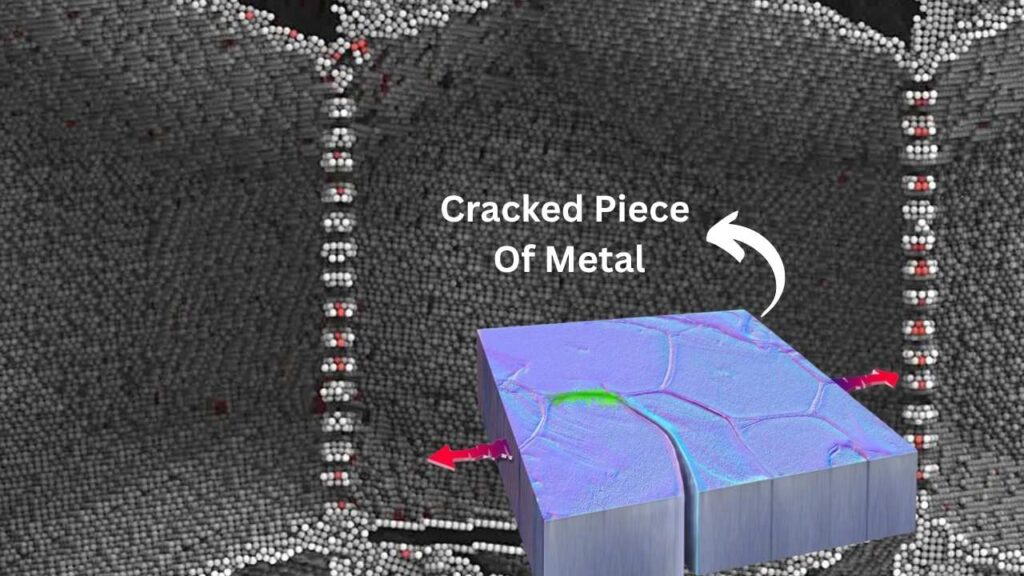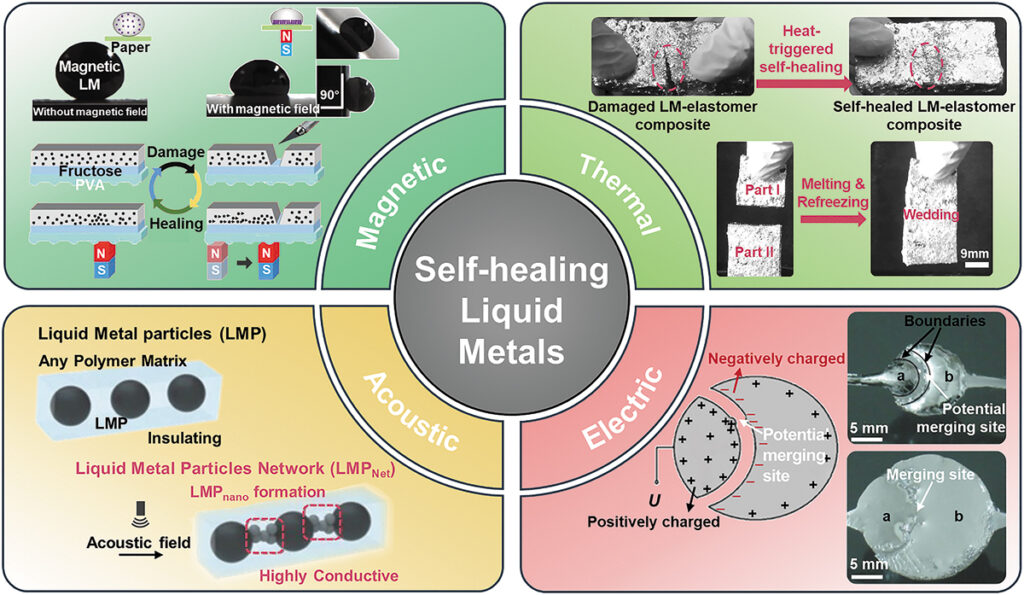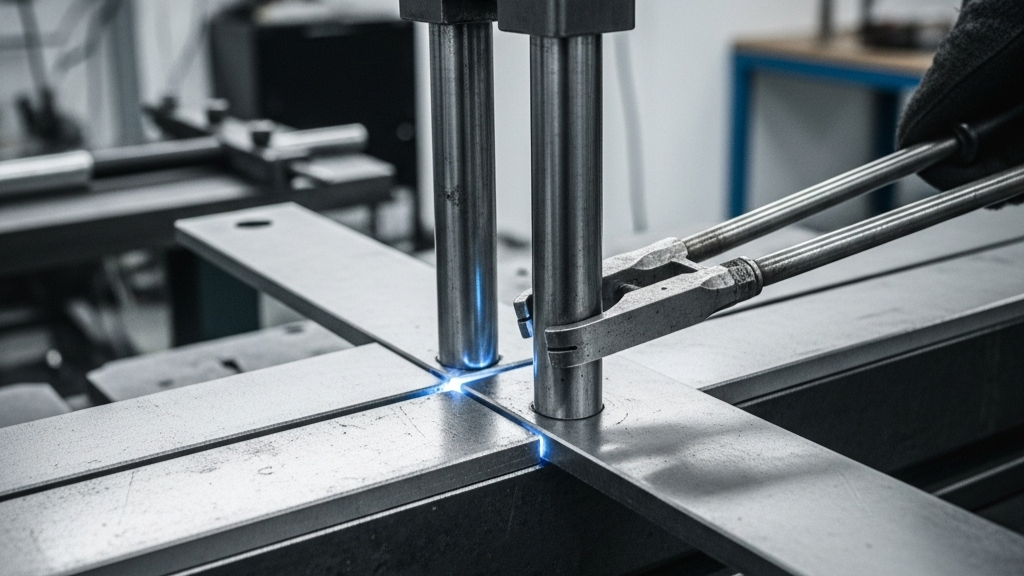Self-Healing Metal Observed for the First Time: Imagine a world where bridges, airplanes, and even your smartphone could automatically repair themselves when damaged. It may sound like something out of a superhero movie, but in 2023, scientists made a discovery that could bring us one step closer to this reality. For the first time ever, researchers observed self-healing metal—a phenomenon where metal cracks, then fuses back together without any human help.

This finding has stunned scientists and could revolutionize the way we think about materials and engineering.
Self-Healing Metal Observed for the First Time
| Feature | Details |
|---|---|
| Discovery | First-ever direct observation of self-healing in metal at the nanoscale |
| Materials Studied | Pure platinum and copper, nanocrystalline structure |
| Conditions | Occurred in a vacuum, at room temperature, under repetitive stress |
| Mechanism | Atoms in the metal re-bonded (cold welding), closing cracks and changing crack paths |
| Potential Applications | Self-repairing infrastructure, aerospace, electronics, engines, and more |
| Limitations | Observed only in nanocrystalline metals, in vacuum; not yet proven in conventional metals or open air |
| Research Institutions | Sandia National Laboratories, Texas A&M University |
| Publication | Nature Journal |
| Official Source | Sandia National Laboratories News Release |
The discovery of self-healing metal marks a turning point in materials science. For the first time, scientists have seen metal heal its own cracks, challenging what we thought we knew about how materials behave. While there are still hurdles to overcome before we see self-healing bridges or airplanes, the potential is enormous. This breakthrough could lead to safer, longer-lasting infrastructure and products, and it opens up exciting new possibilities for research, careers, and industry innovation.
What Is Self-Healing Metal?
Self-healing metal refers to a metal that can repair its own cracks or damage without outside intervention. Traditionally, when metals like steel or aluminum develop cracks—often from repeated use or stress—they eventually break. This process, known as metal fatigue, is a major reason why bridges collapse, airplanes need constant inspection, and machines wear out over time.
But in a groundbreaking experiment, scientists saw something extraordinary: a tiny crack in a piece of platinum stopped growing and actually fused back together, as if the metal had “healed” itself.

How Did Scientists Discover Self-Healing Metal?
The Experiment
- Researchers at Sandia National Laboratories and Texas A&M University were studying how cracks form and grow in metals at the nanoscale (about 1/100,000th the width of a human hair).
- They used a special electron microscope to watch a thin piece of platinum being pulled back and forth—about 200 times per second—to mimic the kind of stress metals experience in real-world machines.
- After about 40 minutes, something unexpected happened: a crack that had started growing suddenly stopped, then began to close and disappear, leaving the metal looking almost as good as new.
Why Was This So Surprising?
Before this discovery, most scientists believed that once a crack formed in metal, it could only get worse, eventually leading to failure. The idea that metal could “heal” itself seemed impossible—until now.
The Science Behind Self-Healing Metal
What’s Happening at the Atomic Level?
The researchers believe the healing process involves a phenomenon called cold welding. This occurs when two clean metal surfaces come into close contact, allowing their atoms to bond together without needing heat or electricity.

- In the experiment, the crack faces inside the platinum were so close that their atoms could “reach out” and reconnect, closing the gap.
- The process happened at room temperature and in a vacuum, which prevented air or contaminants from interfering.
Is It Just Platinum?
Interestingly, similar self-healing behavior was observed in copper, and a separate study in 2024 found that nanoscale silver could also self-repair under certain conditions. This suggests the phenomenon might not be limited to just one type of metal, but more research is needed.
Why Does This Matter? Real-World Impact
Everyday Examples
- Airplanes: Metal fatigue is a leading cause of airplane part failure. If self-healing metals could be used, planes might last longer and be safer.
- Bridges and Buildings: Infrastructure could automatically repair tiny cracks before they become dangerous, reducing maintenance costs and preventing disasters.
- Electronics: Solder joints in phones, computers, and other gadgets could heal themselves, making devices more reliable.
Professional Insights
For engineers, architects, and manufacturers, this discovery could mean designing products that last much longer and require less maintenance. It could also lead to safer transportation, more durable electronics, and even new possibilities in space exploration, where repairs are difficult or impossible.
Limitations and Challenges
While the discovery is exciting, there are important limitations:
- Scale: The self-healing was observed only at the nanoscale, in very tiny pieces of metal.
- Environment: The experiments were done in a vacuum. In the real world, metals are exposed to air, water, and other elements that could prevent healing (for example, by causing oxidation).
- Material Type: Only certain pure, nanocrystalline metals have shown this ability so far. Most metals used in construction are alloys (mixtures of metals) and may not behave the same way.
The Road Ahead: What’s Next for Self-Healing Metals?
Ongoing Research
Scientists are now working to answer big questions:
- Can self-healing happen in larger pieces of metal?
- Will it work in regular air, not just a vacuum?
- Can we design new alloys or treatments to make more metals self-healing?
If these challenges can be overcome, the future could include self-repairing bridges, cars, airplanes, and even robots.
Career and Industry Impact
For professionals in materials science, engineering, and manufacturing, this discovery opens new research directions and potential job opportunities in developing, testing, and commercializing self-healing materials.
Practical Advice: How Can You Prepare for This Revolution?
For Students and Young Professionals:
- Study materials science, nanotechnology, or mechanical engineering.
- Stay updated on new research by following scientific journals and reputable news outlets.
- Consider specializing in advanced manufacturing or materials testing.
For Industry Leaders:
- Monitor ongoing research and pilot projects involving self-healing materials.
- Invest in partnerships with universities and research labs.
- Plan for future upgrades by considering how new materials could extend the life of your products or infrastructure.
Tsinghua’s Theater-Based Immersive Neuroaesthetics Study Sparks Public Interest
AI Helps Decode Hard‑To‑Read Proteins, Boosting Biological Research
FAQs About Self-Healing Metal Observed for the First Time
What is self-healing metal?
Self-healing metal is a type of metal that can repair its own cracks or damage without outside help, thanks to the way its atoms can re-bond under certain conditions.
Has self-healing metal been used in real-world products yet?
Not yet. The phenomenon has only been observed in laboratory experiments, at the nanoscale, and in a vacuum. More research is needed before it can be used in everyday products.
Which metals can self-heal?
So far, platinum, copper, and silver have shown self-healing abilities at the nanoscale. Scientists are exploring whether other metals and alloys can do the same.
How could self-healing metals change the world?
If developed for practical use, self-healing metals could make bridges, airplanes, electronics, and other products safer, longer-lasting, and less expensive to maintain.






